Growing edible chestnuts
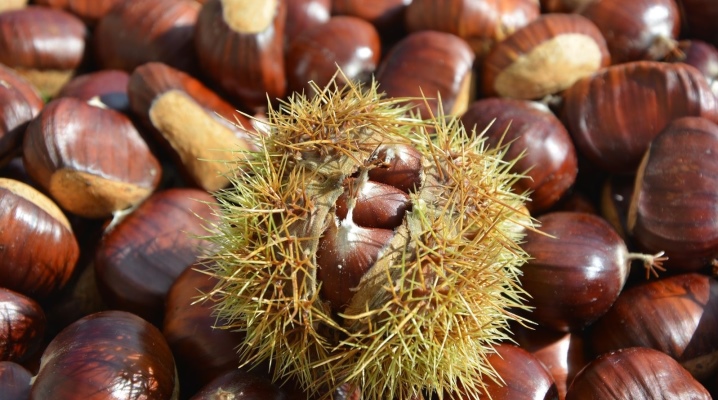
Chestnut is a beautiful powerful tree that will be a wonderful decoration for city streets, and for parks and squares. But, in addition to decorative qualities, a certain type of chestnuts also produces edible fruits. Many gardeners want to see these trees on their plots. But for this you need to know what is the cultivation of edible chestnut.
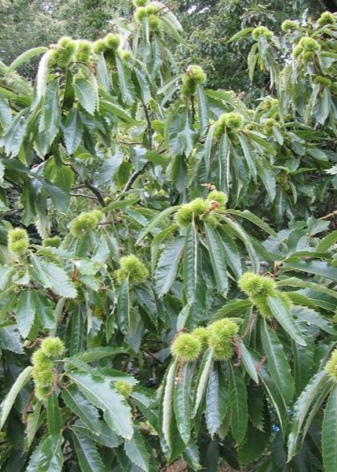
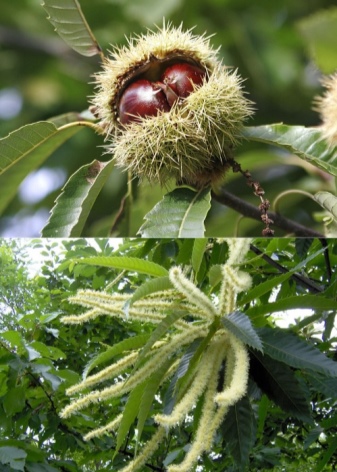
Description
Edible (or noble) chestnut grows in different parts of the world, including Russia. Most often it can be found in the southern regions - on the Black Sea coast, in the Caucasus, as well as in the central part of our country. In areas with a cold climate and harsh winters, chestnuts are not grown. These trees tend to thrive on fertile soils with adequate moisture.

Sowing chestnut is a fast-growing deciduous tree. But a tree can reach completely different parameters in height - this figure varies from 2 to 40 meters. It depends on the type of tree and growing conditions.
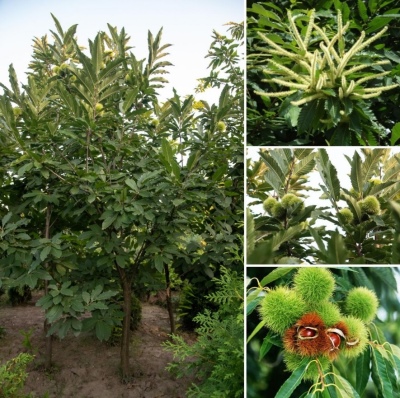
Judging by the description, the trunk of an adult tree is straight and powerful, with a dense brown bark. The root system is of the surface type. The crown of the tree is quite dense, more often it looks like a pyramid. The leaf has a dark green color, pointed tips and an oblong shape. The length can vary from 7 to 25 cm.
Chestnut blossoms evoke a lot of positive emotions. The chestnut alley looks very attractive when a large number of trees are blooming at the same time. The cream-colored or white flowers can grow up to 15 cm in height. The pyramidal shape makes them look like candles nestled in the dense crown of trees. The area where these majestic trees bloom takes on a festive and solemn look. In many cities, the flowering of chestnuts is associated with the arrival of a real warm spring.
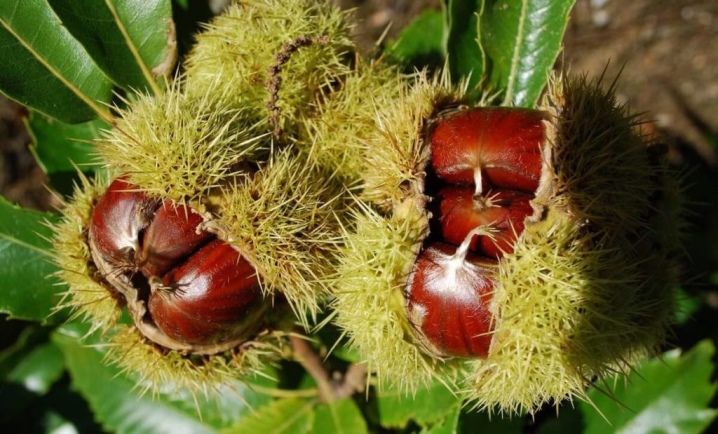
At the end of September, the fruits ripen. The nut is in a green shell with spines. The kernel is brown and has a smooth and thin shell. Finally, the fruits ripen by the end of October - beginning of November. The average lifespan of a chestnut exceeds 100 years, but centenarians with a much more impressive age are often found.
The chestnut begins to bear fruit in the 4th year of life, in some cases - in the 5-6th year. Every year there will be more and more fruits on the tree. For example, a 40-year-old tree can be harvested up to 70 kg.
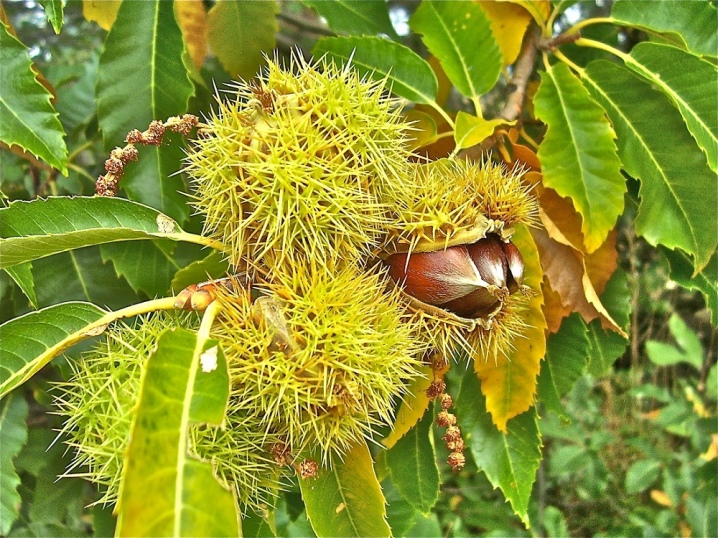
How to distinguish from inedible chestnuts?
In general, edible and inedible nuts have similarities: for example, they have the same shell color and size. But there are some nuances that make it possible to understand that one tree is different from another:
-
the inedible nut has a bitter taste and is used only for pharmaceutical purposes;
-
the pericarpels are green even when the nuts are ripe, while in the edible they acquire a pinkish tint;
-
the shell in which the edible nut is hiding has not thorns, but tubercles;
-
the flowers of the horse chestnut are 2-3 times larger than those of the edible.
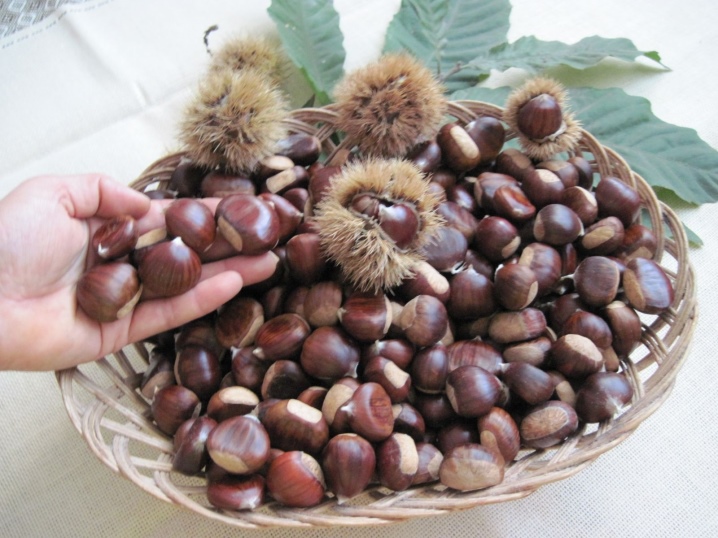
Planting and leaving
The first thing to consider when planning to plant chestnuts on the site is that these handsome men require a lot of space. Therefore, immediately it is worth weighing the pros and cons: will it be possible to grow such a tree on your site, so that later you do not have to urgently cut it down when it turns out that it blocks the light of other plants or interferes with buildings.
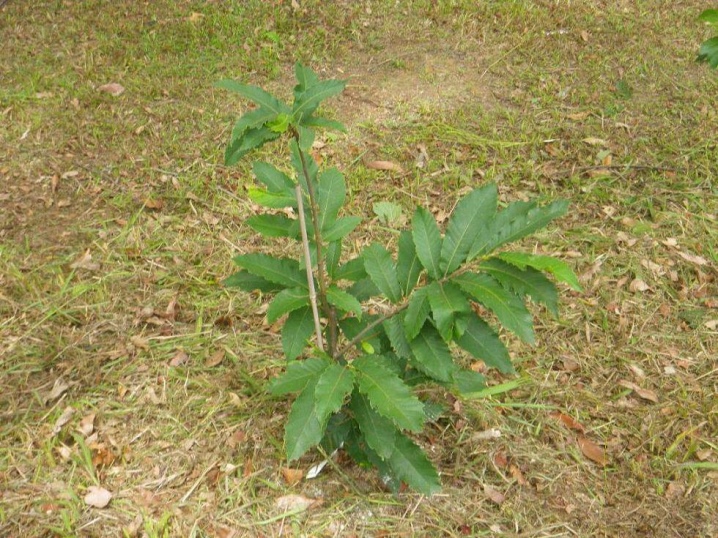
If the issue is resolved, you should choose a spacious, well-lit area with loose, neutral soil.
It is better to buy seedlings in a nursery, where there is an opportunity to learn everything about the intricacies of caring for each specific variety. So you can get a good healthy tree and insure yourself against future failures.
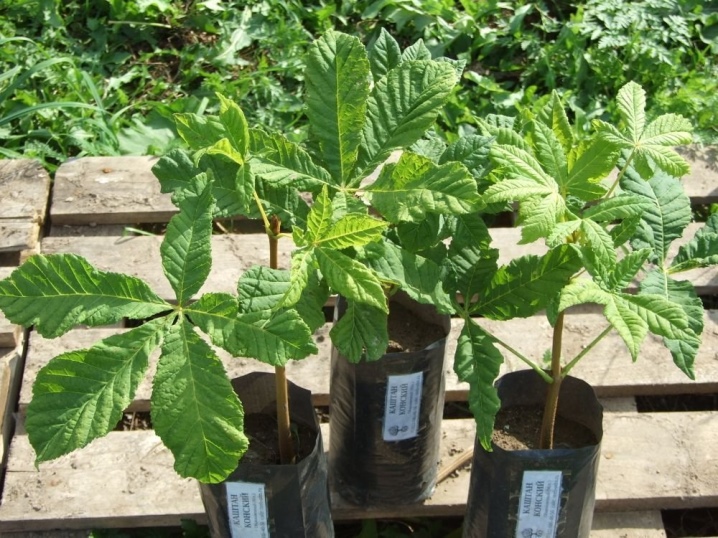
Trees in the ground can be planted both in spring and autumn. The main thing is that it was a month before the onset of frost, and the seedling had time to take root and calmly endure the winter.
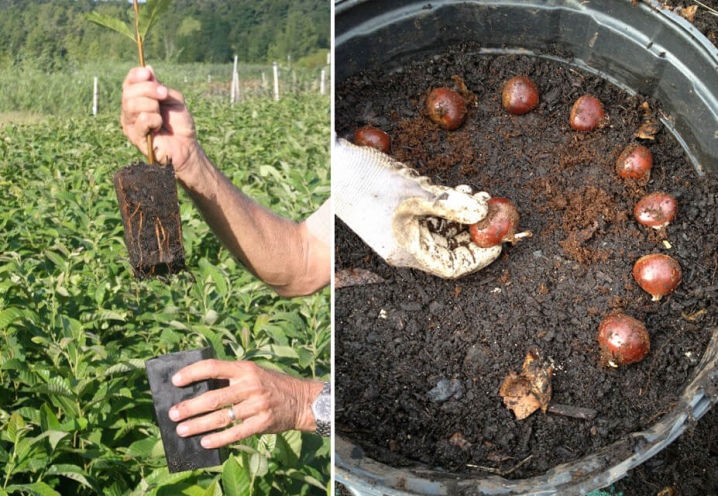
The hole should be about 70 cm deep and wide. A small tubercle is formed in the pit, the roots are placed on it, well spreading them on the sides. Then a part of the earth mixed with fertilizers is poured, tamped, then the earth is poured again, and again well pressed to avoid the formation of voids. After that, the seedling is watered abundantly, about 2 buckets per tree. For the first time, a peg should be placed next to it, and a seedling should be tied to it - such a support will be needed until the tree grows stronger.
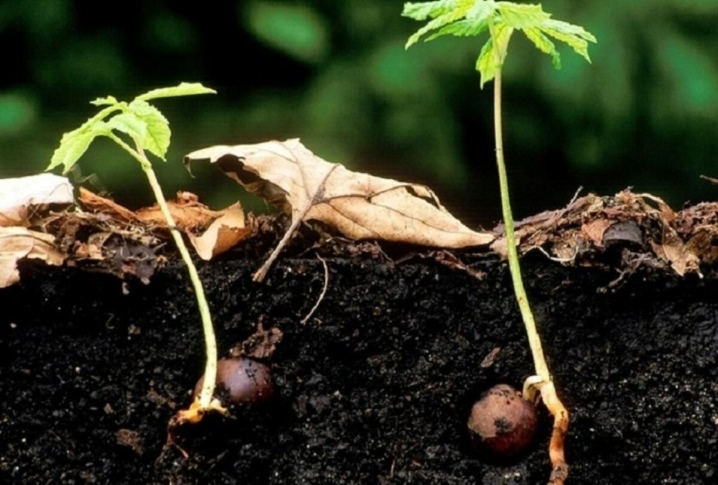
The cultivation of chestnuts is usually straightforward. Taking care of this tree is no more difficult than any other.
-
At first, the tree needs regular watering - at least once a week, subject to dry weather. Chestnuts like moderate moisture, they do not tolerate drought well. Therefore, you need to monitor the level of moisture in the soil and the mood of the tree. It will tell you that he does not have enough water - the leaves will droop.
-
When a tree is 3 years old, it no longer needs regular watering, it has enough rain. But if the summer is very dry, the tree should be watered three times per season, and abundantly. In dry weather, at least 40 liters of water should be poured under an adult tree.
-
In the first years of life, fertilizers can be applied twice a season - organic and mineral. For the first time, 10 liters of water can be diluted with 2 kg of manure with the addition of 30 grams of urea. At the end of summer, instead of urea, you can add nitroammofosk.
-
In the near-trunk circle, the soil should be loosened every 2 weeks after planting and weeds should be removed. Mulch, which can be used as sawdust or needles, will help to retain moisture in the soil and slow down the growth of weeds.
-
To prevent the development of various diseases in early spring and late autumn, the tree must be treated with Bordeaux liquid. "Fitoftorin" will help with powdery mildew. Affected leaves should be removed and burned immediately.
-
In the southern regions, trees do not need protection during the winter. In the central part of Russia and areas with a cold climate, for the winter, you should increase the layer of mulch, well protecting the roots, the crown can be wrapped in burlap. At an older age, trees are able to withstand not too severe frosts.
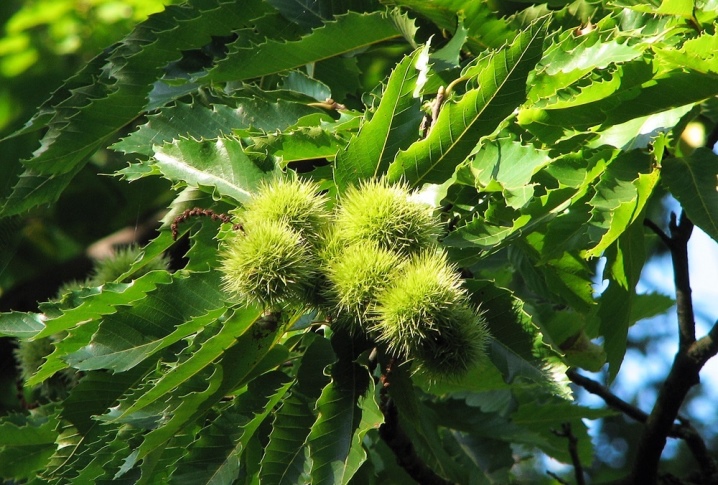
In regions with extremely harsh winters, the chestnut is unlikely to be able to overwinter.
- Do not forget that the tree needs formative and sanitary pruning. In the spring, you need to carefully examine the tree and remove all dried and diseased branches. If you immediately want to form a more lush crown, you need to pinch the crown so that the chestnut gives side shoots. And you should also remove the branches that grow inward.
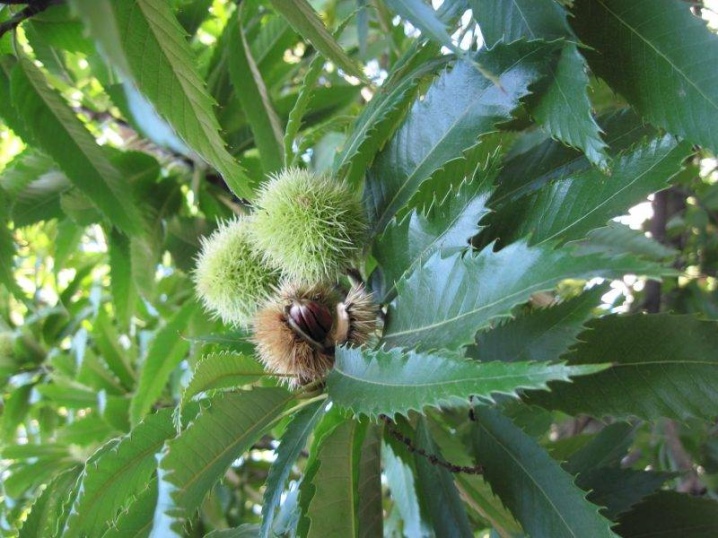
Reproduction
If the gardener has a desire to see not one tree on the site, but 2-3 or even a whole alley, you can try to propagate the plant. To do this, you need to germinate the seeds. First, they are kept in a cool place for 2 weeks, then immersed in warm water for several hours. And only then can the seeds be placed in the ground to a depth of about 8 cm, leaving a distance of 30 cm between the holes. Not all seeds will sprout. But after the sprouts are about 30 cm high, they need to be planted. You can immediately find a permanent place for the seedlings so that they no longer transplant.
You can also choose the method of grafting. To do this, cuttings are cut, observing an angle of 45 degrees, not forgetting to leave growth buds on them. Then the cuttings are placed in the soil, covered with a greenhouse cap on top, watered regularly, ventilated and wait for the cuttings to take root. After that, they are seated in a permanent place.
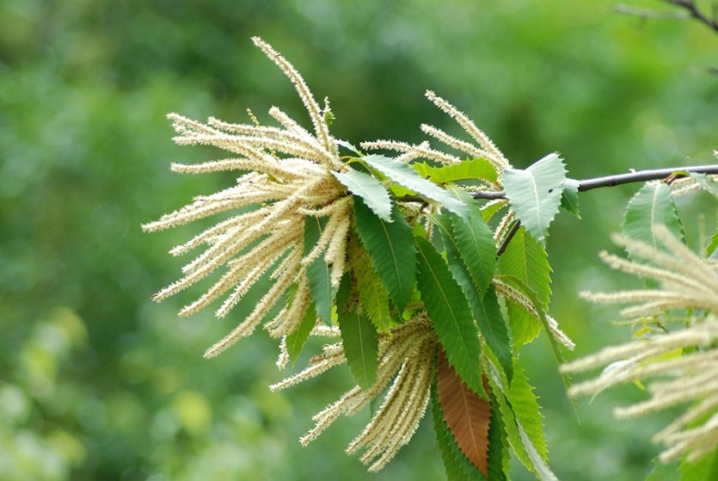
Application
Chestnut is used in various fields. First of all, this is a great option to decorate the territory. You can plant alleys, which will be a wonderful frame for the site. Edible chestnut can be used not only in landscape design - its nuts are rich in vitamins, they can be eaten both independently and can be prepared various dishes.
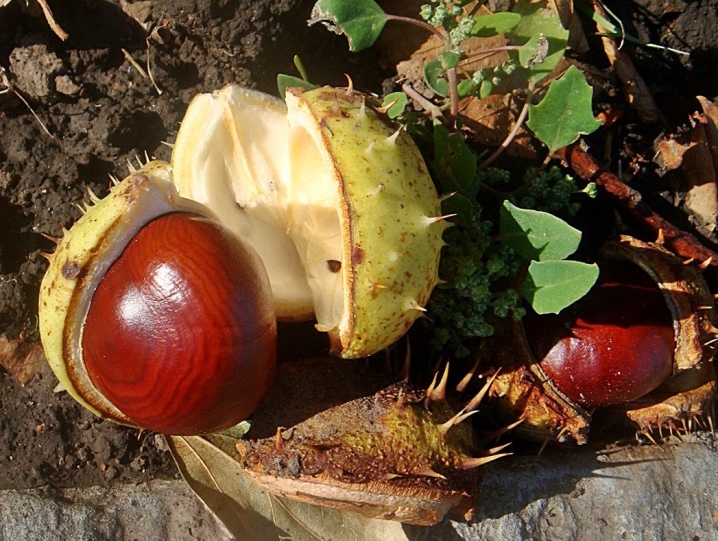
It should be noted that during the flowering period, the chestnut is an excellent honey plant. Chestnut honey has a peculiar, slightly bitter taste. It contains more nutrients than other varieties and has an antiseptic effect. Honey is not candied for a long time. It tastes good on its own and can be added to pastries.

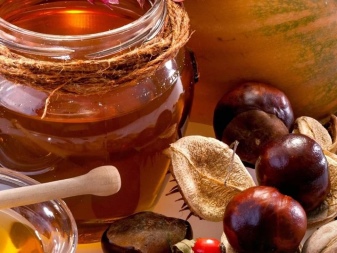
Nuts are eaten raw, fried, baked, canned. They are eaten with salt and sugar. They are used in the preparation of confectionery; you can bake bread from ground nuts and even make coffee. Meat is stuffed with nuts, added to cakes. As for other dishes, it all depends on the chef's willingness to experiment.
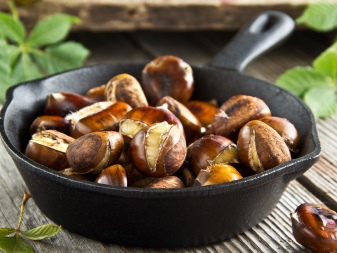
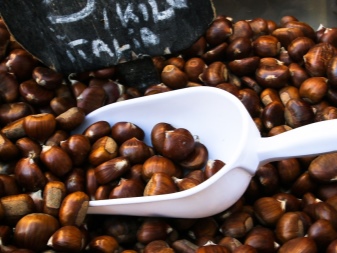
Let's take a look at how to prepare delicious meals, in which chestnuts are an important ingredient that gives a special flavor to the dish.
Duck breast with chestnuts
For cooking you will need:
-
duck breasts;
-
chestnuts;
-
oranges;
-
Red onion;
-
balsamic vinegar.
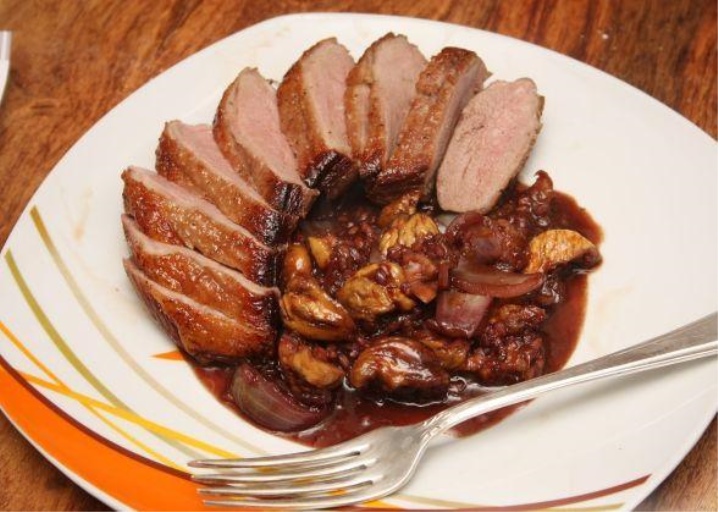
The breasts are fried in a pan. The chestnuts are baked in the oven for 15 minutes at a temperature of 200 degrees, then the shells are removed.
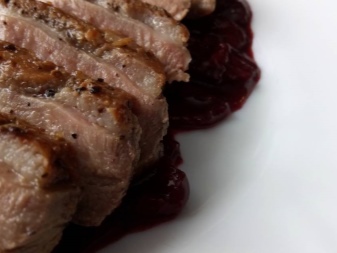

Fry onions in a skillet, add the juice of 2 oranges, chestnuts, a couple of tablespoons of balsamic vinegar. Then the breasts are poured over with this mixture and stewed until all the liquid has evaporated.
Turkey stuffed with chestnuts
The turkey must be placed in the marinade in advance and kept there for a day to make it tender and juicy. You can even use just water as a marinade with the addition of salt, sugar and spices to your liking.
-
The filling is placed just before baking. The main ingredient in the filling will be chestnuts, plus you will need white bread, butter, celery, and parsley.
-
For the filling, you need to dry the pieces of bread in the oven. The chestnuts should be cut in the form of crosses from the bottom of the shell and cooked for half an hour. After that, they need to be cooled, peeled and cut into 4 pieces.
-
Melt the butter in a pan, add the onion and celery. Then croutons and chestnuts are added there. The turkey is filled with this filling and sent to the oven for an hour and a half.
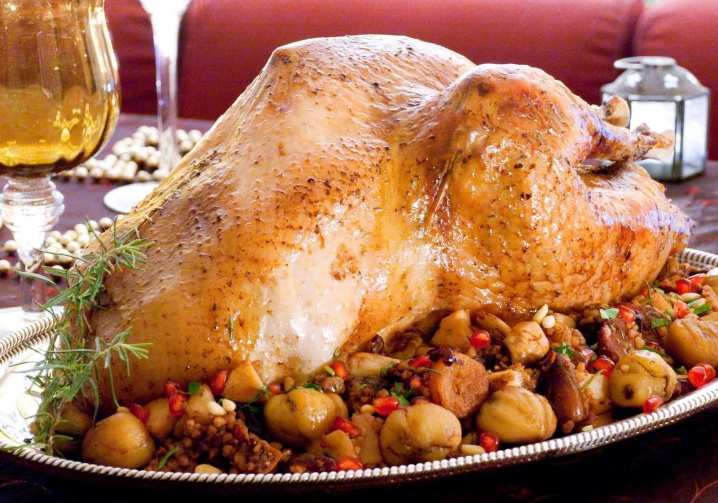
Beets with canned chestnuts
To prepare this dish, you will need beets, onions, spices and chestnuts.
Beets are first boiled until tender. Onions are fried in a frying pan in vegetable oil. Add herbs, spices, lay out canned chestnuts.
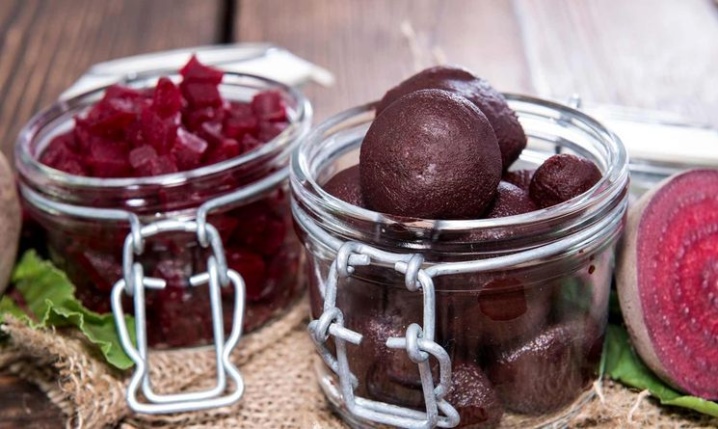
Boiled beets are cut into slices and placed on a baking sheet. Pour all this with fried chestnuts, bake in the oven for 30 minutes.

In addition, chestnuts make an excellent jam. A kilogram of nuts will require one and a half kilograms of sugar and a pinch of citric acid. First, the nuts are peeled and boiled for 20 minutes. Sugar syrup is prepared separately. A little water is added to the sugar to dissolve the sugar. Then chilled nuts are poured into the finished syrup and boiled for half an hour. Delicious jam is ready.
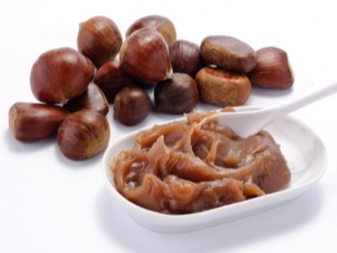
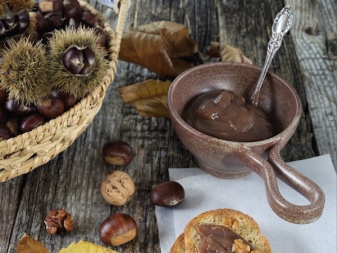
For more information on how to grow edible chestnuts, see the next video.



































































The comment was sent successfully.